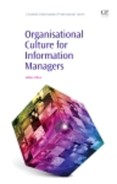Table of Contents
Chapter 1: The significance of organisational culture
Why is understanding organisational culture so important?
Organisational culture and information management – academic research
What is organisational culture?
The debate surrounding national culture
Chapter 3: The structural environment
Regional technological infrastructure
Overview of the regulatory environment
Chapter 4: Occupational culture
Occupational culture and information behaviours
The impact of occupational culture on information management in a university
Corporate culture – the tip of the iceberg
In-house language and narratives
Visual cues inside the organisation
Chapter 6: Assessing information culture
Scenario one: establishing a special library service
Scenario two: developing a business case for a digital library
Scenario three: implementing an electronic document and records management system (EDRMS)
